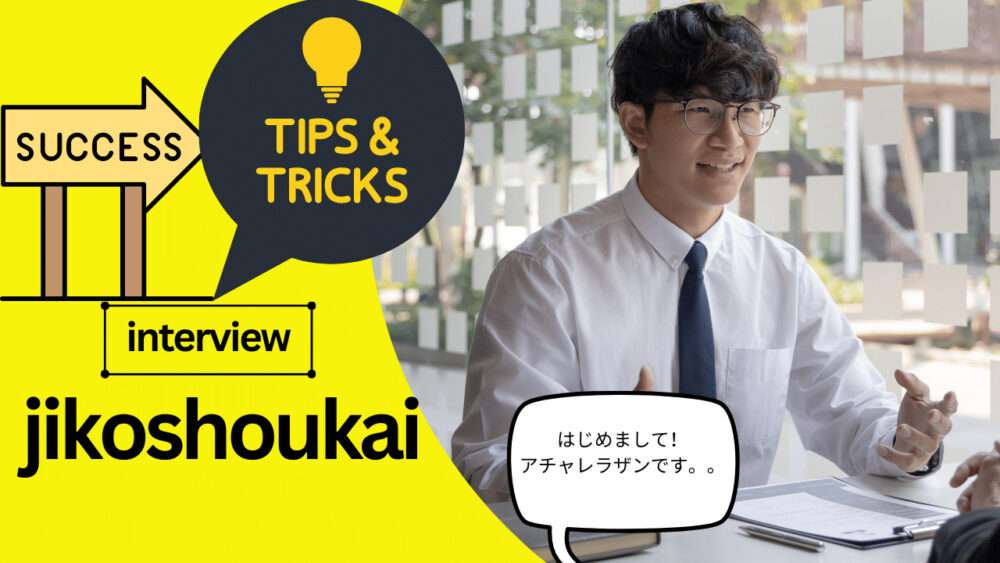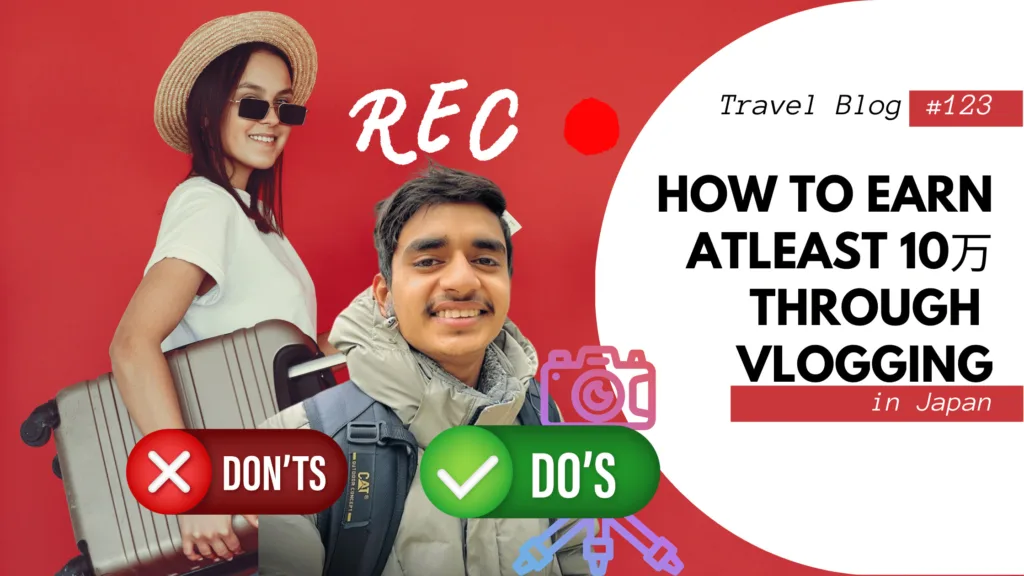
https://smartwayofmoney.com/2023/03/24/5-common-challenges-for-newcomers-in-japan-and-how-to-overcome-them/
Tips,tricks and jikoshoukai for interview ,introduction, samples in japanese and translation in english
Welcome, dear readers! Are you foreign student and looking for how to do self introduction or jikoshoukai for interview in perfect way.Here are best Tips and Tricks to pass interview.
Today, we delve into the heart of Japanese business culture by exploring Jikoshoukai, the art of self-introduction for interview in Japan. This integral part of personal and professional interactions plays a crucial role in job interviews. Let’s embark on this journey of understanding Jikoshoukai and its significance.
Table of Contents
The Art of Jikoshoukai for interview
Jikoshoukai, the art of introducing oneself, is not merely a recitation of facts about oneself. It is a delicate balance of formality, personal touch, and a demonstration of respect towards the listener. In a culture that values humility and modesty, it’s essential to present yourself in a way that doesn’t come across as arrogant or boastful. So how do we strike this balance? Let’s break it down jikoshoukai for interview.
Structure of Jikoshoukai
A Jikoshoukai typically starts with a polite greeting, followed by your name, your company or school (if applicable), and then some personal information, such as your hometown or hobbies. It is crucial to transition smoothly between these topics, ensuring your Jikoshoukai flows like a well-crafted story. Remember, the end of your Jikoshoukai should leave a lasting impression, so be sure to conclude on a high note.
Crafting Your Jikoshoukai for an Interview
When preparing your Jikoshoukai for an interview, keep in mind the job or industry you’re applying for. Highlight your skills and experiences that align with the job requirements. Be sure not to brag, but instead, express a willingness to learn and contribute. When it comes to discussing hobbies and interests, choose those that reflect positively on you as a professional.
Examples of Successful Jikoshoukai in interview
Let’s look at some successful examples of Jikoshoukai in interviews. For instance, a candidate for a software engineering position might emphasize their love for problem-solving and detail their experience in coding. An applicant for a teaching role could talk about their passion for education and their past experience tutoring students. In each case, the candidate’s Jikoshoukai paints a clear picture of their suitability for the role.
Common Mistakes to Avoid
Common mistakes in Jikoshoukai often involve either sharing too much or too little information. Avoid lengthy stories about your personal life and refrain from being too vague about your qualifications. Over-practicing can also make your Jikoshoukai come across as robotic, so strive for a balance of preparation and spontaneity.
Practice and Preparation
The key to a successful Jikoshoukai is practice. Record yourself, listen back, and refine your introduction. Don’t hesitate to seek feedback from others, too. Be prepared for potential follow-up questions that your Jikoshoukai might prompt.
Conclusion
Mastering the Jikoshoukai in interview can set the tone for the rest of your interview, leaving a strong impression on your interviewer. Remember, it’s not just about stating facts about yourself, but weaving a story that portrays you as a strong fit for the role. With diligent practice and the right approach, your Jikoshoukai can become a powerful tool in your job-seeking journey.
I hope this article has provided you with valuable insights into crafting your Jikoshoukai. Here’s to making strong first impressions in your interviews! Until next time, readers.
Samples for Jikoshoukai for interview
Here’s a sample Jikoshoukai for a job interview in Japanese. Suppose you’re applying for a job as a software engineer:
始めまして、私の名前は田中です。東京大学の情報科学部を卒業し、現在はフリーランスのソフトウェアエンジニアとして働いています。
私の専門は、主にPythonとJavaを使用したアプリケーション開発です。過去には、大手企業のための大規模なソフトウェアプロジェクトに関与し、その成功に大いに貢献しました。
趣味は音楽と旅行で、新しい文化を経験することで視野を広げることができます。それは私のプログラミングにも役立っています。
どうぞよろしくお願いします。
Translation:
Nice to meet you, my name is Tanaka. I graduated from the Department of Information Sciences at the University of Tokyo and currently work as a freelance software engineer.
My expertise lies primarily in application development using Python and Java. In the past, I have been involved in large-scale software projects for major companies, contributing significantly to their success.
My hobbies are music and travel, as experiencing new cultures broadens my perspectives. This also helps in my programming work.
I look forward to working with you.
10 examples of jikoshoukai for foreign student
Here are 10 examples of a Jikoshoukai for interview for foreign students in Japan, each with a different personality:
- The Artist
はじめまして、私の名前はエマです。イギリス出身で、現在、東京芸術大学で美術を学んでいます。絵を描くことが大好きで、特に水彩画に魅力を感じています。日本の自然は、私の創造性を刺激する素晴らしい源です。よろしくお願いします。
Translation: Nice to meet you, my name is Emma. I’m from the UK and currently studying Fine Arts at the Tokyo University of the Arts. I love painting, especially with watercolors. Japan’s nature is a wonderful source of inspiration for my creativity. Nice to meet you. - The Sports Enthusiast
こんにちは、ジョンと申します。オーストラリアから来ました。今、関西大学でスポーツ科学を学んでいます。ラグビーをプレイするのが大好きで、週末にはよく試合をします。日本のラグビーチームと一緒にプレイすることは、私にとって非常に刺激的です。よろしくお願いします。
Translation: Hello, my name is John. I come from Australia. I’m currently studying Sports Science at Kansai University. I love playing rugby and often play matches on weekends. Playing with Japanese rugby teams is very exciting for me. Nice to meet you. - The History Buff
はじめまして、私の名前はリンです。中国出身で、京都大学で歴史を専攻しています。特に日本の戦国時代に興味があります。趣味は読書と旅行で、日本の歴史的な場所を訪れることが好きです。どうぞよろしくお願いします。
Translation: Nice to meet you, my name is Lin. I am from China and I am majoring in History at Kyoto University. I am particularly interested in Japan’s Sengoku period. My hobbies are reading and traveling, and I like to visit historical places in Japan. Nice to meet you. - The Technophile
こんにちは、私の名前はマイクです。アメリカから来ました。現在、東京工業大学で情報技術を学んでいます。新しいテクノロジーとガジェットに興味があり、趣味はコーディングとビデオゲームです。よろしくお願いします。
Translation: Hello, my name is Mike. I come from the United States. I’m currently studying Information Technology at the Tokyo Institute of Technology. I’m interested in new technology and gadgets, and my hobbies are coding and video games. Nice to meet you. - The Environmentalist
はじめまして、私の名前はソフィアです。ドイツ出身で、現在、東京大学で環境科学を学んでいます。自然と動物が大好きで、地球の持続可能性について学ぶことに情熱を感じています。趣味はハイキングと写真撮影で、日本の美しい風景を楽しんでいます。どうぞよろしくお願いします。
Translation: Nice to meet you, my name is Sofia. I’m from Germany and currently studying Environmental Science at the University of Tokyo. I love nature and animals, and am passionate about learning about the sustainability of our planet. My hobbies are hiking and photography, and I enjoy the beautiful landscapes of Japan. Nice to meet you.
- The Foodie
はじめまして、私の名前はイサベラです。イタリアから来て、神戸大学で栄養学を学んでいます。料理が大好きで、特に日本料理の素晴らしいバラエティに魅了されています。休日にはよく新しいレシピを試したり、新しいレストランを探したりします。よろしくお願いします。
Translation: Nice to meet you, my name is Isabella. I am from Italy and am studying nutrition at Kobe University. I love cooking and am particularly fascinated by the wonderful variety of Japanese cuisine. On holidays, I often try new recipes and look for new restaurants. Nice to meet you. - The Music Lover
こんにちは、私の名前はマックスです。カナダ出身で、京都市立芸術大学で音楽を学んでいます。私はギターを弾くのが大好きで、自分で曲を作るのが楽しいです。日本の音楽シーンはとてもエキサイティングで、新しい音楽を発見するのが好きです。よろしくお願いします。
Translation: Hello, my name is Max. I’m from Canada and studying music at the Kyoto City University of Arts. I love playing the guitar and find it fun to create my own songs. The music scene in Japan is very exciting and I enjoy discovering new music. Nice to meet you. - The Entrepreneur
はじめまして、私の名前はリーです。シンガポール出身で、慶應義塾大学でビジネスを学んでいます。将来は自分のスタートアップを立ち上げることを夢見ています。趣味は読書とネットワーキングで、新しい人々と出会い、新しいアイデアを共有することが好きです。どうぞよろしくお願いします。
Translation: Nice to meet you, my name is Lee. I’m from Singapore and studying business at Keio University. I dream of starting my own startup in the future. My hobbies are reading and networking, and I like meeting new people and sharing new ideas. Nice to meet you. - The Animal Lover
こんにちは、私の名前はルーシーです。ニュージーランドから来て、名古屋大学で動物学を学んでいます。犬や猫が大好きで、自由な時間にはよく動物保護施設でボランティアをしています。日本の野生動物について学ぶのが楽しいです。よろしくお願いします。
Translation: Hello, my name is Lucy. I’m from New Zealand and studying zoology at Nagoya University. I love dogs and cats, and often volunteer at animal shelters in myfree time. It’s fun to learn about Japan’s wildlife. Nice to meet you. - The Fashionista
はじめまして、私の名前はクロエです。フランス出身で、東京の文化服装学院でファッションデザインを学んでいます。服をデザインするのが大好きで、特に日本のストリートファッションに影響を受けています。新しいトレンドを追いかけるのが好きで、自分自身のスタイルを表現することが楽しいです。どうぞよろしくお願いします。
Translation: Nice to meet you, my name is Chloe. I’m from France and studying fashion design at Bunka Fashion College in Tokyo. I love designing clothes and am particularly influenced by Japanese street fashion. I enjoy following new trends and find it fun to express my own style. Nice to meet you.
Model example of Complete Interview
Here’s a full example of an interview between a job applicant and a representative of a company. In this scenario, the applicant is a software engineer applying to a tech company:
Interviewer: おはようございます、田中さん。弊社への興味をお持ちいただき、ありがとうございます。まずは自己紹介をお願いできますか?
Interviewer: Good morning, Mr. Tanaka. Thank you for your interest in our company. Could you please start by introducing yourself?
Applicant (田中さん): おはようございます。始めまして、田中と申します。東京大学の情報科学部を卒業し、現在はフリーランスのソフトウェアエンジニアとして働いています。主にPythonとJavaを使用したアプリケーション開発が専門で、過去には大手企業の大規模なソフトウェアプロジェクトに関与しました。よろしくお願いします。
Applicant (Mr. Tanaka): Good morning. Nice to meet you, my name is Tanaka. I graduated from the Department of Information Sciences at the University of Tokyo and am currently working as a freelance software engineer. I specialize in application development mainly using Python and Java, and have been involved in large-scale software projects for major companies. Nice to meet you.
Interviewer: ありがとうございます、田中さん。それでは、なぜ弊社に興味を持ったのか教えていただけますか?
Interviewer: Thank you, Mr. Tanaka. Can you tell us why you became interested in our company?
Applicant: はい、その点については、私があなたの会社の革新的なテクノロジーと成長の可能性に感銘を受けたからです。特にあなたの会社が開発したAI技術には大きな可能性を感じています。私自身もAIと機械学習に強い関心を持っており、その領域でスキルを活かすチャンスを探しています。
Applicant: Yes, I was impressed by your company’s innovative technology and potential for growth. I particularly see great potential in the AI technology that your company has developed. I myself have a strong interest in AI and machine learning and am looking for opportunities to leverage my skills in this area.
Interviewer: それは素晴らしいですね。あなたが過去に取り組んだプロジェクトで、特に誇りに思っているものは何ですか?
Interviewer: That’s great. What is something you are particularly proud of from the projects you have worked on in the past?
Applicant: 私がフリーランスとして働いていたときに、大手小売業者のために在庫管理システムを開発したプロジェクトがあります。そのシステムは、AIを使って在庫を予測し、適切な在庫レベルを維持するための自動注文システムを含んでいました。そのプロジェクトは大成功で、クライアントは在庫管理の効率が大幅に向上したと非常に満足しています。
Applicant: When I was working as a freelancer, I developed an inventory management system for a major retailer. The system included an automatic ordering system to maintain appropriate inventory levels using AI. The project was a great success, and the client was very satisfied with the significant improvement in inventory management efficiency.
Interviewer: それは素晴らしい経験ですね。最後に、あなたが弊社で達成したい目標は何ですか?
Interviewer: That’s an amazing experience. Finally, what is your goal that you want to achieve at our company?
Applicant: 私の最終的な目標は、あなたの会社のAI技術をさらに進化させることです。私は、AIと機械学習がビジネスにどのように影響を与えるかについての深い理解を持っています。その知識を活かして、あなたの会社のAI技術を次のレベルに引き上げ、更なる成長を達成することが私の目標です。
Applicant: My ultimate goal is to further evolve your company’s AI technology. I have a deep understanding of how AI and machine learning can impact a business. I aim to use that knowledge to elevate your company’s AI technology to the next level and achieve further growth.
Interviewer: 田中さん、それは素晴らしい目標です。あなたの情熱と経験は、我々のチームにとって貴重なものとなるでしょう。本日はお時間をいただき、ありがとうございました。後日、結果についてご連絡いたします。
Interviewer: Mr. Tanaka, that’s a wonderful goal. Your passion and experience will be invaluable to our team. Thank you for your time today. We will contact you about the results at a later date.
Applicant: こちらこそ、お時間をいただきありがとうございました。お話できて嬉しかったです。結果を楽しみにしています。
Applicant: Thank you for your time as well. I was glad to be able to talk to you. I look forward to hearing the results.
Here are some YouTube videos and books that could be helpful for practicing and understanding Jikoshoukai for interview :
YouTube Videos:
- Learn how to introduce yourself in Japanese!| Jikoshoukai1.
- How to Introduce Yourself in Japanese – Jikoshoukai1.
- Jikoshoukai: How to Introduce Yourself in Japanese – Tofugu1.
- Jikoshoukai1.
Books:
- “Genki” – This is a popular beginner option for learning Japanese. It covers all four language skills including speaking, which would be useful for Jikoshoukai. It’s well-written, easy to understand, affordable and comprehensive2.
- “Japanese from Zero!” – This series is designed for self-study and it has become really popular since its first publication in 2006. It provides an unintimidating entry point to teaching yourself Japanese2.
- “Living Language Japanese” – This program combines traditional textbooks with a set of audio CDs and online resources to create a comprehensive experience for learning all the basics of Japanese, which would include how to introduce oneself2.
- “Pimsleur Japanese” – This method focuses on speaking and listening through audio, which is ideal for practicing Jikoshoukai2.
Remember, while books and videos are great resources for jikoshoukai for interview, but practice is key to mastering Jikoshoukai. Try to practice your self-introduction as much as possible, and if you have Japanese friends or a language exchange partner, ask them for feedback.
Continue reading
